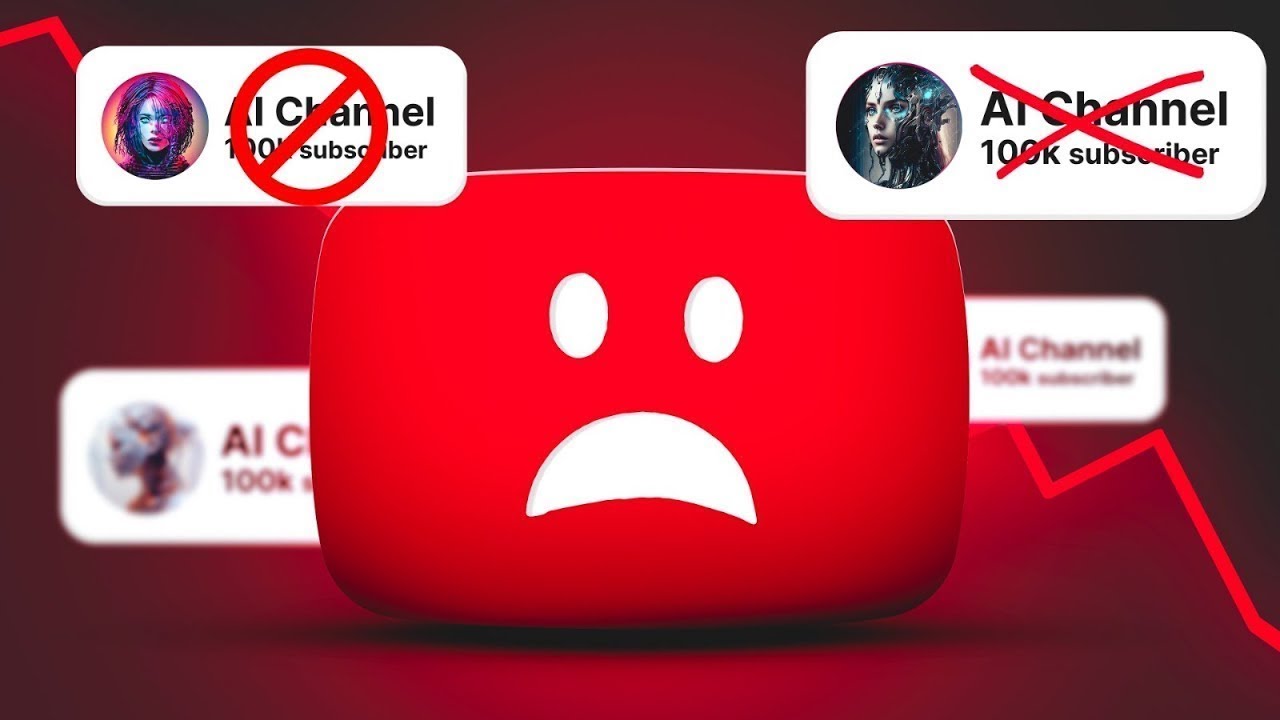The YouTube video development ecosystem is about to change dramatically. Starting July 15, 2025, YouTube will be implementing stricter monetization rules aimed at curtailing ‘mass-produced’ and ‘inauthentic’ content. This isn’t just a minor adjustment to existing policies; it represents a bold declaration from the platform – originality and genuine human input are now paramount.
YouTube has long been a breeding ground for creativity, but its ever-evolving policies have often left creators navigating a complex web of guidelines. This latest update, however, marks one of the most aggressive pushes yet to filter out low-quality, repetitive content that lacks unique value. Channels built on easily replicable formats or automated processes need to seriously re-evaluate their strategies.
While ‘original’ and ‘authentic’ content have always been prerequisites for the YouTube Partner Program (YPP), the updated guidelines aim to more precisely identify ‘mass-produced and repetitious content,’ offering a clearer definition of what constitutes ‘inauthentic’ content in today’s digital landscape. This move is widely seen as a direct response to the proliferation of content that prioritizes views over genuine engagement and creative effort.
YouTube hasn’t provided an exhaustive list defining ‘mass-produced’ or ‘inauthentic,’ but key areas of focus have emerged:
- Content borrowed from other sources with minimal alteration: Simply adding background music, changing playback speed, or cropping visuals will no longer suffice. Content must be ‘significantly altered’ to be considered original.
-
Repetitive content lacking a clear purpose: Videos that follow highly repetitive formats (especially in Shorts), are templated, or are solely uploaded for view count without offering entertainment or educational value will be scrutinized.
-
Low-effort AI-generated content: This is a significant point. While YouTube hasn’t explicitly banned AI content, videos heavily reliant on AI-generated voices, avatars, automated scripts, or slideshows lacking substantial human commentary or creative input are at high risk of demonetization.
- Clickbait and spam-like uploads: Channels engaging in deceptive practices or offering little meaningful content beyond gaming the system are squarely in YouTube’s crosshairs.
This policy change is a strategic move by YouTube to safeguard its content ecosystem and maintain advertiser trust. Advertisers prefer their brands associated with high-quality, authentic content, and this update aims to ensure ad revenue flows to creators who genuinely contribute to the platform.
The immediate impact will be most keenly felt by channels that have thrived on volume over originality:
- Content aggregators: Those who simply compile clips from other creators with minimal or no transformative value.
- Automated content channels: Channels utilizing AI tools to mass-produce videos with generic voiceovers, visuals, or scripts.
- ‘Faceless’ channels: While not all faceless channels are inauthentic, those lacking a distinct human voice, personality, or creative direction will face challenges.
- Low-effort reaction channels: While some reaction channels add valuable commentary and insight, those merely playing content with minimal original contribution may be at risk.
For creators already producing high-quality, original content with a clear human touch, the impact might be minimal. In fact, this shift could prove beneficial, potentially leading to less competition from low-effort content and boosting visibility for genuine creators.
To navigate these new rules and ensure your channel thrives, consider these strategies:
- Prioritize human input and originality: This is the core message.
- Infuse your unique voice: Incorporate personal commentary, distinct storytelling, and your own perspective.
- Show your face (if comfortable): A human presence often signals authenticity.
- Invest in thoughtful editing: Add layers such as B-rolls, text overlays, screen shares, and creative transitions to make each video unique.
-
Brand your content: Use a logo, watermark, or custom intro to signal originality.
-
Transform and add value to reused content: If you use third-party material, ensure significant transformation. This means providing:
- Analysis and commentary: Offer insightful critiques or breakdowns.
- Educational value: Use clips to teach or illustrate a point.
- Unique narrative: Weave clips into a compelling story that couldn’t exist without your creative input.
-
Rethink your AI strategy: AI is a tool, not a replacement for creativity. Use AI to assist, not automate entirely: AI can help with scripting ideas, topic generation, or even initial voiceovers, but the final product must bear your creative mark.
- If using AI voices, combine with human commentary: Ensure there’s a real person adding value and context.
- Disclose AI use: Transparency is crucial.
-
Focus on viewer engagement and purpose: Content should be made for the enjoyment or education of viewers, not solely for views.
-
Build a community: Respond to comments, engage in live chats, and foster a loyal audience.
-
Create series or themed content: Give viewers a reason to return and subscribe.
-
Provide genuine value: Whether it’s entertainment, education, or inspiration, ensure your content offers something meaningful.
-
Review your content library: Proactively assess your existing videos. If you have older content falling into the ‘mass-produced’ or ‘repetitive’ categories, consider updating it or making it private if it’s not performing well and could jeopardize your channel.
While YouTube has provided some clarity, the full extent of enforcement will become clearer after July 15th. The platform will likely utilize a combination of AI tools and human reviewers to identify non-compliant content. Channels found violating the new policy could face individual video demonetization, removal from the YouTube Partner Program, or in severe cases, channel suspension. Appeals will be possible, but creators will need to demonstrate the originality and value of their content.
This shift underscores YouTube’s commitment to fostering a platform of high-quality, authentic content. For creators, it’s a call to action: embrace your unique voice, invest in genuine creativity, and focus on delivering meaningful experiences to your audience.






